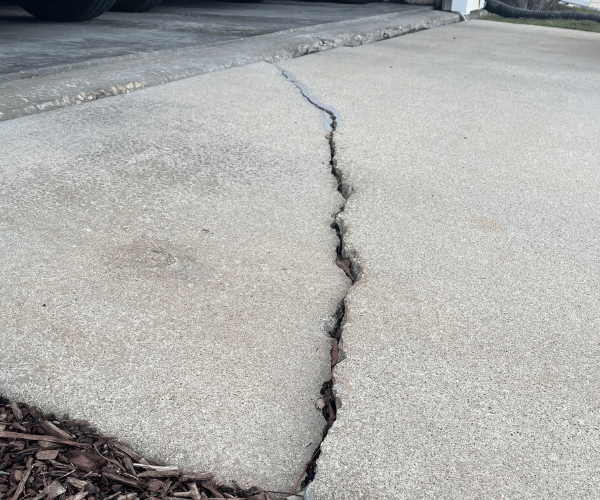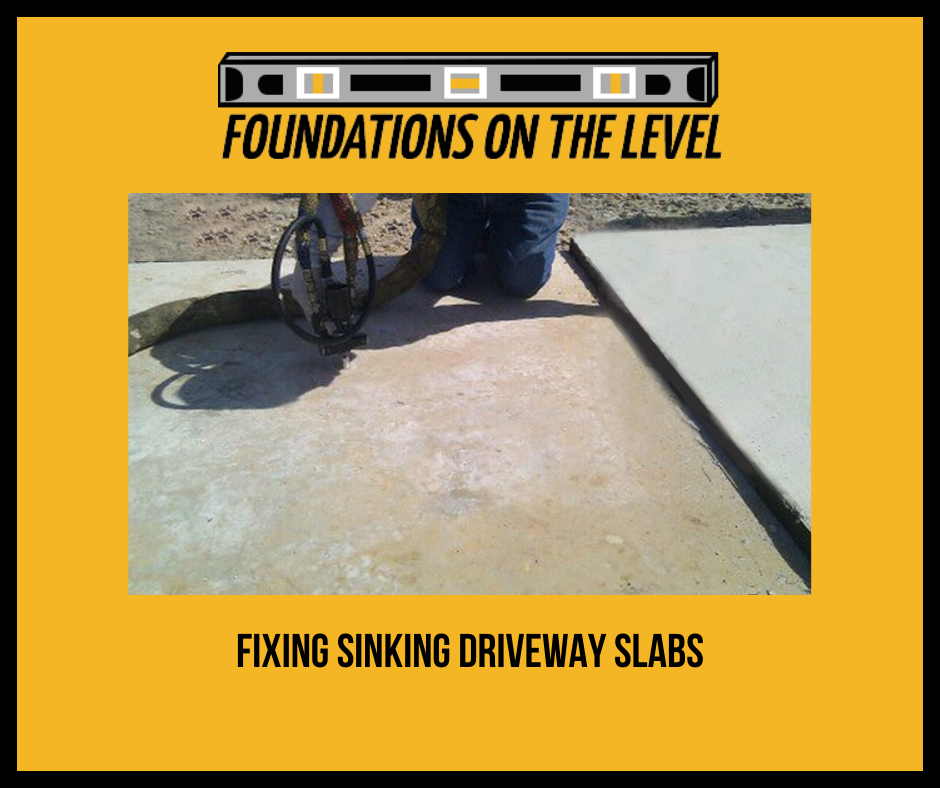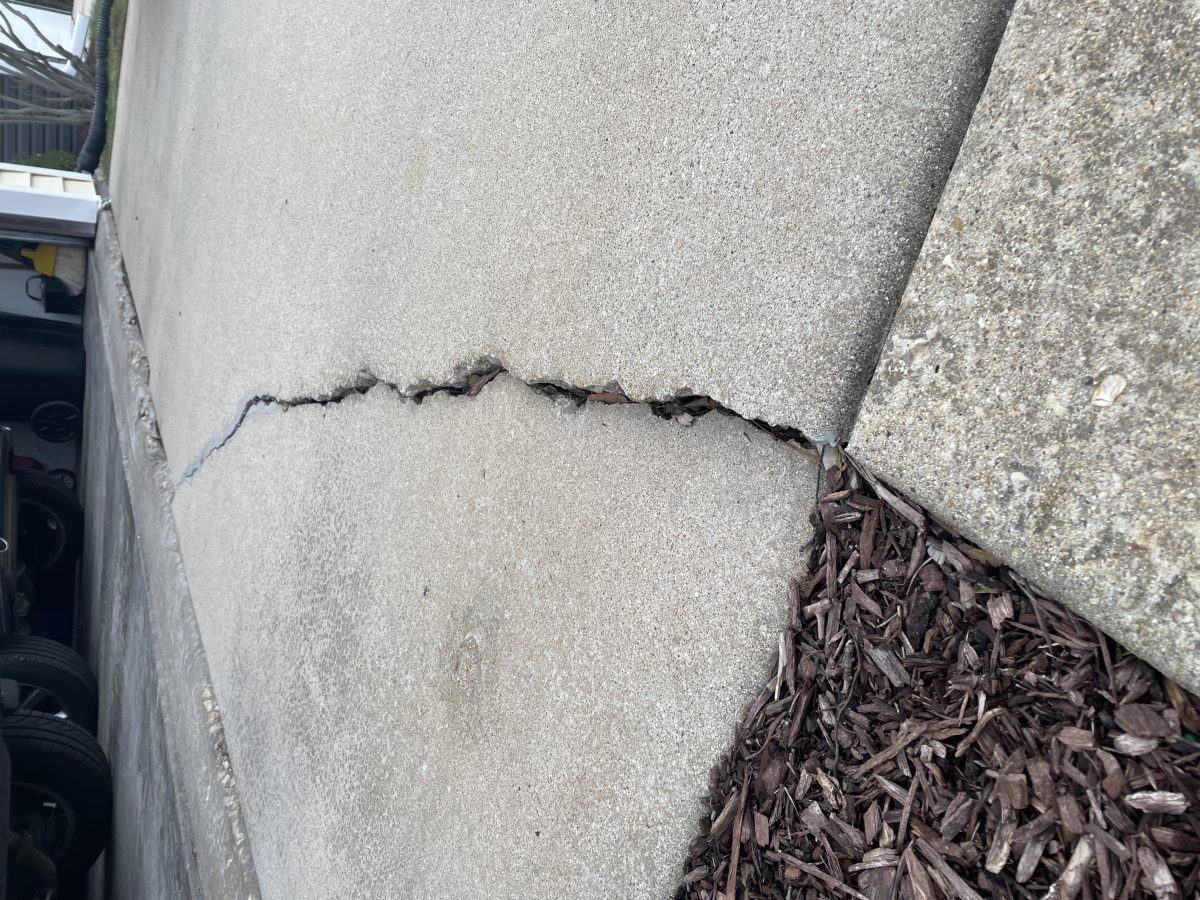How to Fix a Cracked and Sinking Driveway
Wouldn’t it be wonderful if driveways perpetually flat and smooth, pristine surfaces on which to drive or walk or play? Unfortunately that is not reality. Many will eventually be faced with a cracked and sinking driveway.
And while driveways will inevitably, in time, require replacement, your goal should be to avoid that solution as long as possible. It is invasive. It is time-consuming. And it is very expensive.

The Problem With Sinking Driveway Slabs
When a driveway begins to sink and settle, the problems are twofold. The first are those that are the direct result of the sinking.
Ideally, your driveway slab should be basically level with the sidewalk and with the entrance to your garage. If your driveway slab begins to sink at one end, this is no longer the case. This can both pose a tripping hazard and increase the wear and tear on your tires.
Depending on how the driveway sinks, it also could affect drainage off of it. Ideally, your driveway won’t drain water toward your home. If it begins to sink in a way that it does, that can cause more significant problems for your home.
The second set of problems caused by a concrete slab sinking is the effect that it has on the concrete itself. If the entire slab sinks uniformly, your might have minimal issues in this regard. Unfortunately that is rarely the case. If the soil underneath supports some areas of the driveway better than others, it is going to place the slab under stress. Eventually, that stress will likely cause cracking. The longer the slab is under that stress, the worse the cracking issues are likely to get.
A Better Way to Repair a Cracked & Sinking Driveway
Unless the concrete is too far gone to be saved, a better option than tearing it all out and starting from scratch is to lift the sunken concrete back to its original level.
This will not magically fix the cracks. It will, however, remove the tripping hazards that cracks with elevation changes bring. It will also remove the stress on the concrete that can lead to more cracking by properly supporting the slab from below.
How Polyjacking Works
At Foundations on the Level, we use polyurethane foam concrete leveling, also known as polyjacking. After determining where the concrete needs to be lifted, we will drill one or more small holes roughly the size of a dime through the concrete slab. An expanding polyurethane foam solution is then injected through the hole into the soil underneath the slab.
The solution flows into the weak spots in the soil and then starts to expand, hydraulically lifting the concrete upward as it does so. By closely monitoring the process, we can precisely level your driveway slab.
Why Polyjacking Over Mudjacking?
Polyjacking holds several key advantages over the old concrete lifting standby of mudjacking.
- Smaller holes: While the size of mudjacking holes vary, they are often at least twice as large as those made for polyjacking. That makes the mudjacking holes more difficult to repair in a way that both doesn’t cause harm to the slab and doesn’t stick out like a sore thumb on the driveway.
- Faster cure time: With mudjacking, you usually can’t use your driveway for 24 hours after it is completed. With polyjacking, that time is 15 minutes.
- Water resistant: The polyurethane foam doesn’t break down in the presence of water or the chemicals found in soil. This makes it basically erosion-proof. The same can’t be said of cement slurry used in mudjacking, which can break down over time.
- Light-weight: The mudjacking slurry is heavy, which can further weigh down the soil. Polyurethane foam, on the other hand, is much lighter, removing that potential problem.
Need to Level Your Driveway in San Diego or Orange County? Give Foundations on the Level a Call
If you live in Southern California and your driveway is sinking and you want more information on what concrete leveling entails, contact us today at Foundations on the Level.
Service Area
At Foundations on the Level we are proud to provide foundation repair and more services to San Diego and Orange counties in California. This includes the following cities and more:
San Diego County: Bonita, Carlsbad, Chula Vista, El Cajon, Encinitas, Escondido, Fallbrook, Lakeside, Lemon Grove, Oceanside, Rancho Santa Fe, San Diego, Santee, San Marcos, Spring Valley, Vista
Orange County: Aliso Viejo, Anaheim, Arcadia, Costa Mesa, Dana Point, Garden Grove, Huntington Beach, Irvine, Laguna Beach, Laguna Niguel, Mission Viejo, Newport Beach, Orange, San Clemente, San Juan Capistrano, Santa Ana, Tustin, Yucaipa
Similar Blog

How to Fix a Cracked and Sinking Driveway
September 19, 2024

Why Is My Driveway or Sidewalk Sinking?
August 16, 2024

Concrete Leveling Using Polyurethane Foam
March 19, 2021